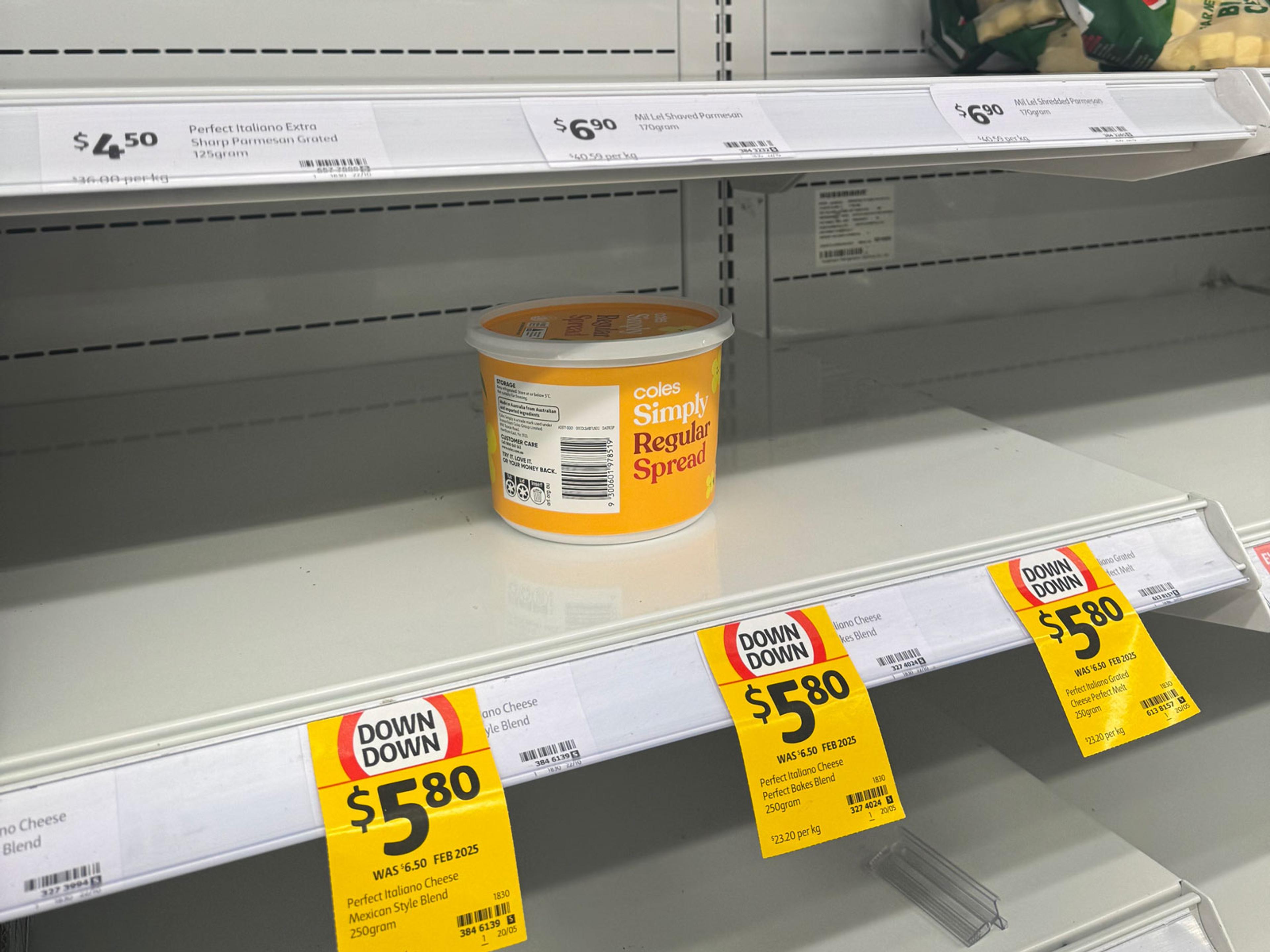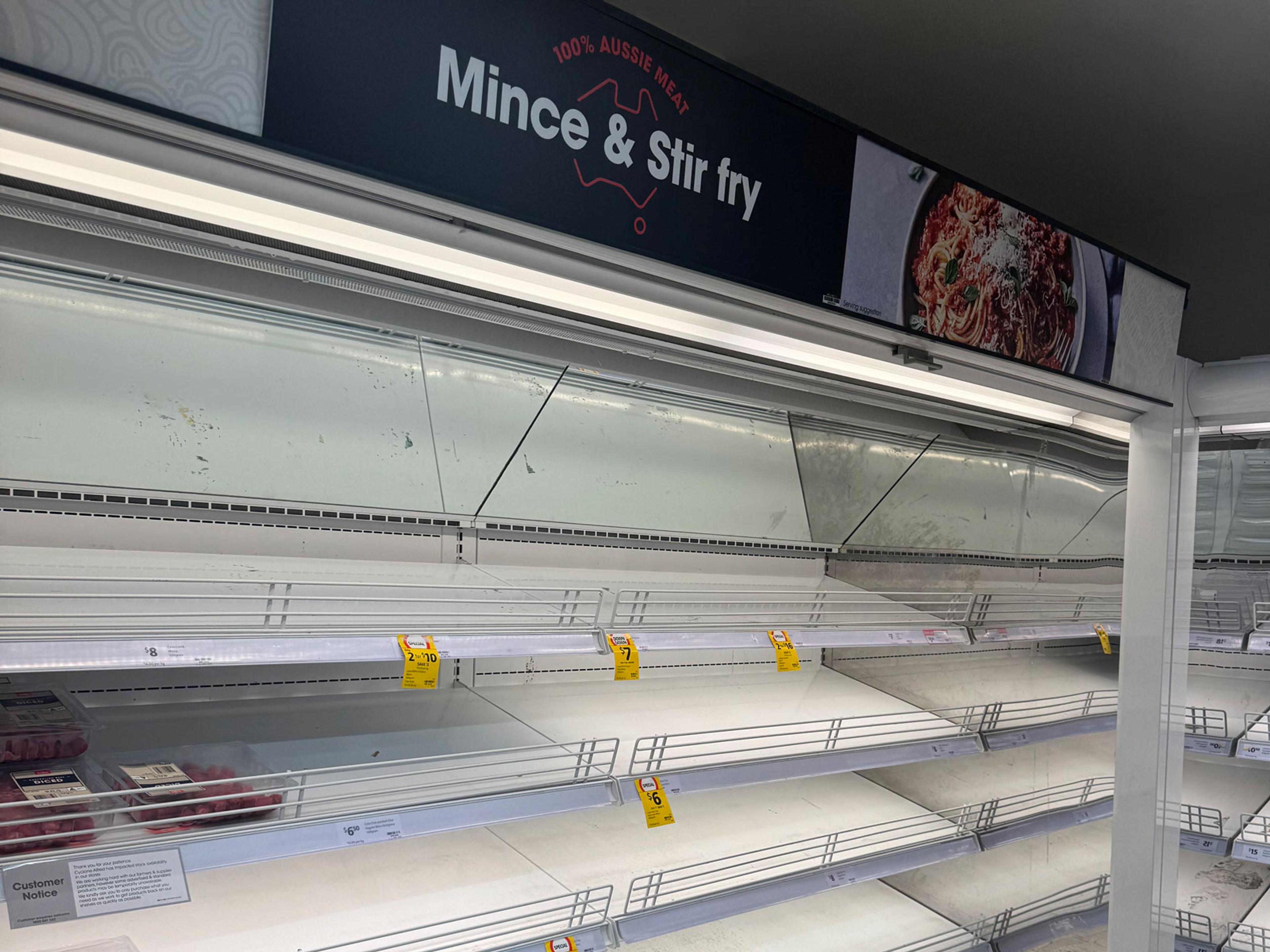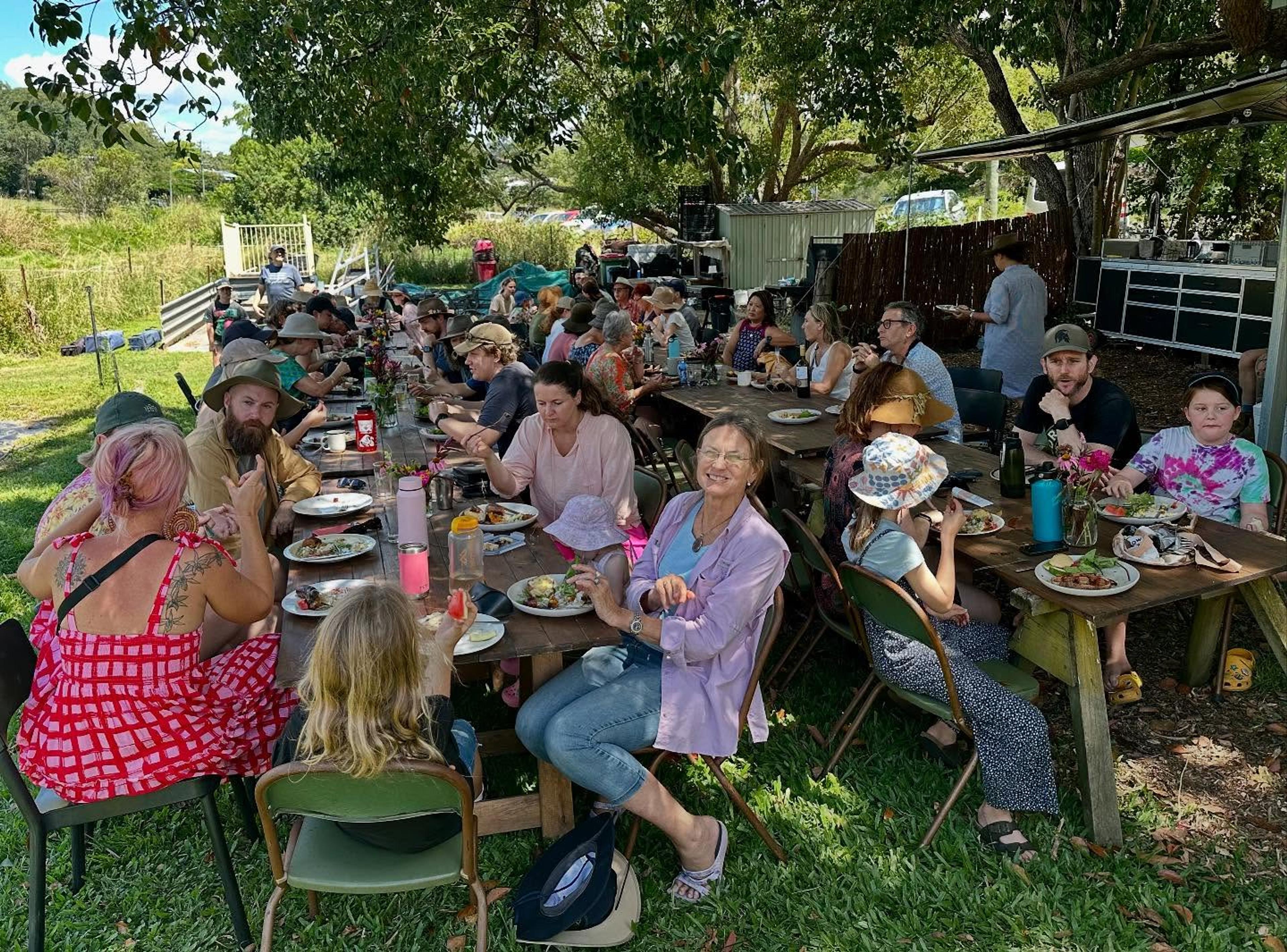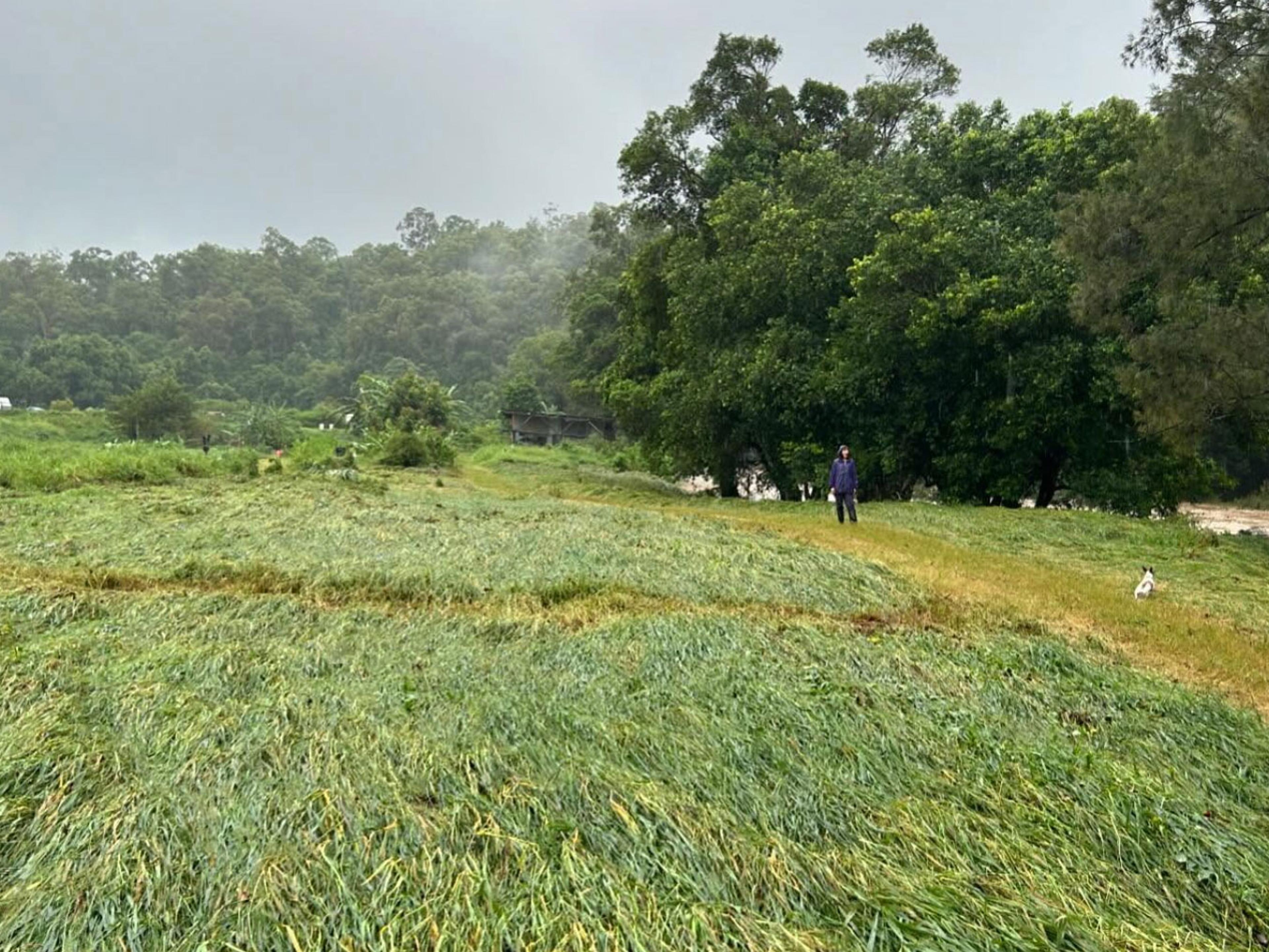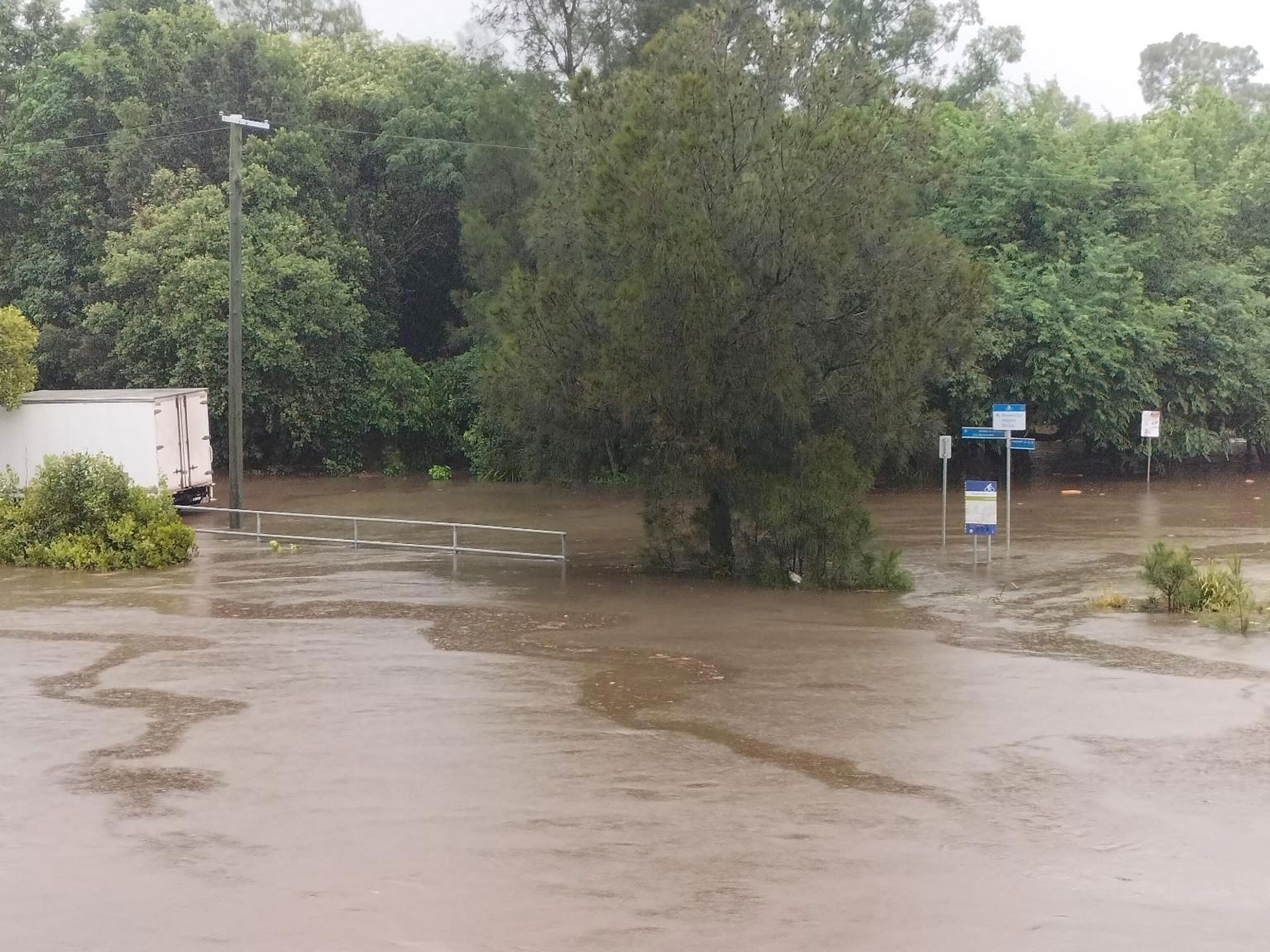Ex-Cyclone Alfred Exposes the Fragility of Australia's Food Supply Chains
Just weeks after monsoon rains wreaked havoc on Far North Queensland’s food supply chains, another extreme weather event has struck further south. Ex-Cyclone Alfred, which battered South East Queensland and Northern NSW, has once again laid bare the vulnerability of Australia’s food systems in the face of climate change.
Initially forecast to make landfall as a Category 2 cyclone, Alfred stalled over Moreton Bay before weakening into a tropical low as it crossed the coast on March 8. Despite its downgraded status, the storm caused widespread flooding, power outages, and significant disruptions to food distribution networks—impacting both large supermarkets and small-scale farms.
Supermarkets Struggle, but Local Grocers Bounce Back
As panic buying set in ahead of the storm, supermarket shelves were stripped bare of essentials such as bread, meat, dairy, and fresh produce. However, the real test came in the days after the cyclone. Supermarket distribution centres in Brisbane closed ahead of the storm, only reopening with delays, while rail closures north of Brisbane further compounded supply issues.
The impact of these disruptions was severe. Farmers across the region were forced to dump thousands of litres of milk due to transportation delays, with dairy supply chains unable to move products to market in time. Fresh produce supply chains were similarly affected, with delays in harvesting and transportation leading to spoilage and shortages across Queensland and New South Wales.
A week later, major supermarkets were still struggling to restock. Meanwhile, independent green grocers and farmers’ markets were back in business far more quickly. This contrast highlights the fundamental flaw in Australia’s long food supply chains: centralised distribution systems are particularly vulnerable to extreme weather, whereas short, local supply chains can recover faster and more efficiently.
The Impact on Small Farms and Local Producers
For small-scale farmers across South East Queensland and Northern NSW, the cyclone brought setbacks - yet also demonstrated the resilience of community-focused food networks.
Neighbourhood Farm: A Community Supported Agriculture Model Under Pressure
Neighbourhood Farm, a small urban farm in Brisbane, suffered significant crop losses due to wet rot, forcing them to cancel the start of their CSA (Community Supported Agriculture) box program. Without access to disaster payments—only low-interest loans—the farm now faces a three-week income gap. Just a week before the cyclone, the farm had raised $6,000 from its local community to help kickstart the season; now, those funds will be redirected towards recovery instead of growth.
Neighbourhood Farm hosted a fundraiser a week before the cyclone hit. Now all funds raised will be directed towards recovery.
This situation underscores both the value and fragility of the CSA model. Community-supported agriculture is designed to share the risks of farming between growers and consumers, yet many customers remain unaware that CSA payments are intended to support farms through both good seasons and bad. Without greater public understanding of how these models work, small farms will continue to shoulder an outsized burden when disaster strikes.
Loop Growers: A Setback, but Not a Disaster
Loop Growers in Samford is no stranger to extreme weather disruptions. The farm suffered devastating losses during the 2022 floods, when floodwaters destroyed infrastructure, including their processing shed, seed house, and key farm buildings. The impact required months of rebuilding, with the support of the community helping them regain stability.
Crops damaged by heavy rains at Loop Growers.
This time around, Ex-Cyclone Alfred delivered another blow, though on a smaller scale. The farm faced crop damage and delays in resowing, but their infrastructure remained intact. In response, they remained optimistic: “All good out here. Just a setback. Crops to be resown, but we can manage that. As always, the important thing is to support small-scale farms and the businesses who support them. Small businesses suffer hugely, so do what you can.” Their ability to bounce back is a testament to the importance of diverse revenue streams, strong community ties, and flexible business models.
Echo Valley Farm: Adapting on the Fly
Echo Valley Farm, a pasture-based regenerative farm in Goomburra, faced logistical challenges due to flooded roads. Their response was proactive, adjusting their delivery plans in real-time and keeping customers updated: “With more rain on the way, a trip to Brisbane no longer seems like the best idea. Thanks to everyone for your patience as we try to figure out a delivery plan that will work for as many people as possible.”
Northey Street City Farm: A Critical Food Hub Hit Hard
One of Brisbane’s most important urban food hubs, Northey Street City Farm, was devastated by 1.5 metres of floodwater. The damage extended beyond crops to include essential infrastructure—parts of their electrical network, storage sheds, and heavy equipment were lost. The farm was forced to close its nursery and cancel its weekly farmers’ market, resulting in significant revenue losses.
The photos show mostly the early stages of the flooding, along Northey Street and around the creek. Photo credit: Northey Street City Farm
Unlike larger agribusinesses, Northey Street is uninsurable for flood damage. The farm has implemented a flood preparedness plan since the devastating floods of 2022, but without external funding, their ability to rebuild is limited. They have now launched a flood relief campaign to help cover the costs of recovery and future mitigation efforts.
What This Means for Australia’s Food System
Ex-Cyclone Alfred provides yet another example of how climate change is testing the resilience of Australia’s food supply chains. While long, centralised supply chains continue to buckle under extreme weather events, small-scale and local food systems demonstrate agility and strength—but remain under-supported.
The widespread shortages in major supermarkets reinforce just how fragile these highly centralised systems are. Large-scale food distribution networks struggle to withstand the shocks of extreme weather, as seen during both the recent monsoon rains in Far North Queensland and now with Cyclone Alfred. In contrast, small-scale and local food networks, though also impacted, recovered more quickly and with greater adaptability. However, these local systems remain significantly underfunded and unsupported, making them just as vulnerable to future climate events if they do not receive the recognition and resources they need.
If Australia’s food system is to become more resilient, structural changes must be made. Supporting small-scale farmers in times of crisis should be a national priority. Unlike industrial agribusinesses, many local farmers don’t qualify for disaster relief grants, leaving them financially exposed when extreme weather strikes. More flexible and accessible support mechanisms, including grants instead of just loans, are needed to ensure their survival.
Community-supported agriculture (CSA) presents a powerful alternative to traditional supply chains, but it requires stronger public buy-in. CSA customers must understand that their subscriptions are not simply transactions for weekly food boxes, but a commitment to sustaining farms through both successful and challenging seasons. Without greater consumer awareness, these models will struggle to function as intended.
Investing in local food networks will create a more climate-resilient food system. Small grocers, farmers’ markets, and direct-to-consumer food hubs bounced back much quicker than major supermarket chains in the wake of the cyclone. Strengthening these networks by encouraging consumers to buy directly from farmers through CSAs, REKO groups, and local markets can create a more robust and adaptable system. Supporting local food hubs, such as Northey Street City Farm, through donations and advocacy efforts will also help to build long-term resilience.
Ex-Cyclone Alfred won’t be the last climate disaster to disrupt Australia’s food systems. Likely, it won’t even be the last climate disaster to disrupt Australia’s food systems this year. This should serve as another urgent wake-up call. The failures of long supply chains are becoming increasingly evident, and if we want to ensure food security in an era of escalating climate change, we must prioritise the development and support of strong, local food networks.
Support the work Sustainable Table is doing to develop climate-resilient supply chains and donate today.
